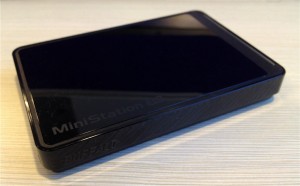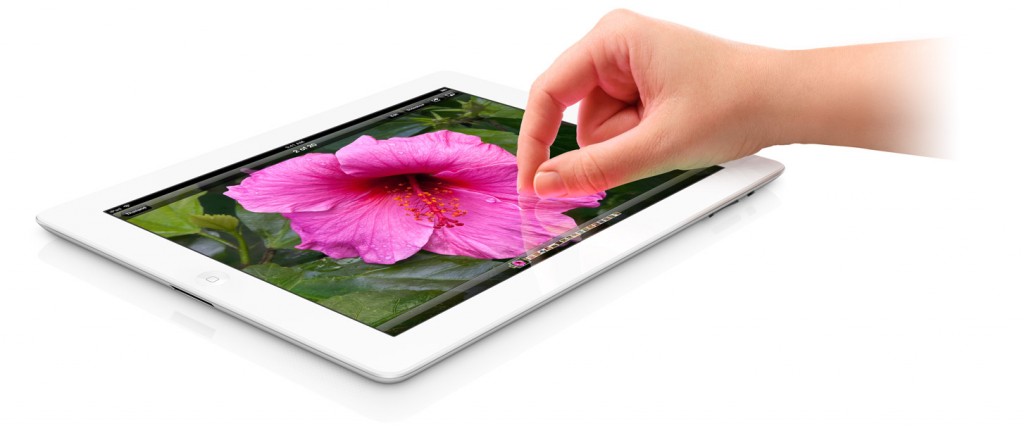 For file transport duties, far I was able to make do with my not-so-portable Buffalo DriveStation. However, I recently hooked up the Drivestation to my LinkStation Live as storage expansion so I need another portable drive for file transport duties. But I don’t usually transport files much since the advent of, you know, the Internet. But it so happened that Michelle also needed to backup her files since she’s going to be getting a new laptop. So we got a Buffalo MiniStation Stealth. It’s nothing unusual, just your run-of-the-mill 1TB USB 3.0 portable hard drive. The interesting thing, at least to me, is that this is my 4th (5th if you count the now-replaced LinkStation Pro) Buffalo product to date. I even jokingly asked the sales clerk if they have a loyalty card for Buffalo.
For file transport duties, far I was able to make do with my not-so-portable Buffalo DriveStation. However, I recently hooked up the Drivestation to my LinkStation Live as storage expansion so I need another portable drive for file transport duties. But I don’t usually transport files much since the advent of, you know, the Internet. But it so happened that Michelle also needed to backup her files since she’s going to be getting a new laptop. So we got a Buffalo MiniStation Stealth. It’s nothing unusual, just your run-of-the-mill 1TB USB 3.0 portable hard drive. The interesting thing, at least to me, is that this is my 4th (5th if you count the now-replaced LinkStation Pro) Buffalo product to date. I even jokingly asked the sales clerk if they have a loyalty card for Buffalo.
A lot of people were disappointed with the new iPad. And I can understand why. Personally, I wouldn’t get one because of how I use the iPad. Or rather how I don’t use the iPad, Jeanne uses it more. But I’m not disappointed. Not at all. In fact, I find Apple tablet strategy brilliant.
Most of the disappointment focuses on the new iPad being an Apple product (can’t say anything about that) or on the hardware specifications. What does the Retina display matter? But it does, as you will see later. Why only a quad-core GPU update? But really why go quad-core CPU when the main bottleneck is the graphics? And so it goes.
But Apple’s tablet strategy is not just about hardware, it is a synergy of both hardware, the new iPad, and software.
To full appreciate this, go back to earlier this year when Apple announced iBooks 2 for iPad. With it, the iPad became a serious and fully Apple-supported platform for educational use. Then on to the new iPad launch where the new iPad was, of course, the star of the show. It overshadowed the release of new versions of iWork, iPhoto, iMovie, and Garage Band. But all these recently launched applications are as important because with them the current iPad becomes more useful.
But running all these applications (except maybe Garage Band) on the new iPad, with its Retina display, will be awesome. Books, documents, photos, and movies look sharper and you get an improved perspective, literally. Probably even get a productivity boost. To some of us, these things matter.
Sure, Apple would love current iPad 2 users to upgrade. But current iPad 2 users are not their primary target. Immediately lowering the price of the current iPad 2 stimulated sales and mitigated the new product effect where customers delay purchases because of the announcement of a newer, better version. But it also made it harder to upgrade (i.e. the potential selling price of used iPads became lower and thus making the cost of upgrading higher).
Clearly, the new iPad is targeted more at those who haven’t bought iPads yet, those sitting on the fence just waiting for a little nudge, and those who have the original iPad. And because of the retained price points, instead of buying secondhand iPads they will buy the new iPad directly from Apple.
For Apple, the new iPad matters because it furthers their tablet strategy and puts momentum towards the continuity of iPad sales.
 After much speculation, Apple has announced the new iPad (yes, that’s how it’s called). Highlights are:
After much speculation, Apple has announced the new iPad (yes, that’s how it’s called). Highlights are:
- Retina display – 2048×1536, double the previous iPad
- A5X quad core graphics processor
- 5-megapixel camera with f/2.4 aperture lens, AF, BSI sensor, IR filter
- 1080p video capture
- LTE – up to 73 Mbps, up to 42 Mbps with DC-HSDPA and up to 21.1 Mbps with HSPA+
No word on the RAM and processor speed but they’re likely bumped up in order to accommodate the graphics and business use positioning.
 Apple has sent out press invites to the much anticipated launch of the next iPad. Based on the photo, it seems clear it will have a Retina display. The question is what will be on the insides? A6 quad-core processor? Larger memory? Larger storage? Bigger battery? If this is going to be a pro level device that’s targeted at business users and aligned towards the strategy of cannibalizing or replacing the Mac, then those specs are pretty much assured.
Apple has sent out press invites to the much anticipated launch of the next iPad. Based on the photo, it seems clear it will have a Retina display. The question is what will be on the insides? A6 quad-core processor? Larger memory? Larger storage? Bigger battery? If this is going to be a pro level device that’s targeted at business users and aligned towards the strategy of cannibalizing or replacing the Mac, then those specs are pretty much assured.
My Suunto Observer‘s battery died about a week ago. I have replaced its battery three times before: 2003, 2006 (when I damaged the battery cover), and 2009 (when I got a Suunto battery replacement kit complete with new battery cover and opening tool). But this time, it won’t start up at all. Looks like it’s time to say goodbye. It’s been a good ride. I had taken it up mountains, underground into caves, and underwater. I even used it at the office. It wasn’t without problems, I had replaced the bracelet in 2005. And the pressure sensor gave up a few years ago. The sensor couldn’t be fixed short of replacing all the electronic internals. But it kept on “ticking” sans the barometer and altimeter. But all things must come to an end. What will remain are the good memories.